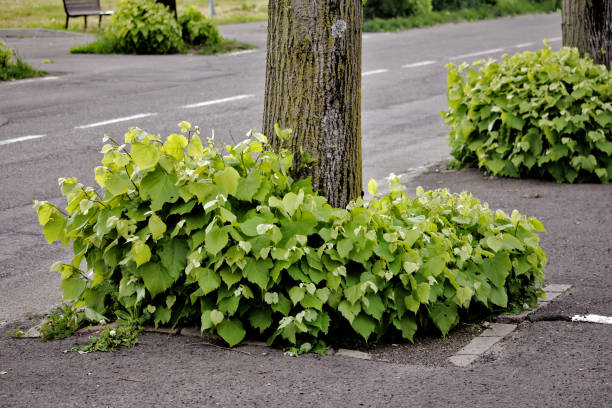Tree suckers are fast-growing shoots that sprout from the roots or lower trunk of a tree. While they may not seem like a big deal at first, tree suckers can eventually overwhelm and kill a healthy tree. Suckers are typically much more vigorous than the rest of the tree, and they can quickly steal nutrients and water from the rest of the plant. In addition, suckers can create weak points in the trunk that make the tree more susceptible to storm damage. Suckers also tend to be very brittle, and they can easily break off in high winds, causing further damage to the tree. As a result, it’s important to prevent tree suckers from taking over your trees. Thankfully, there are a few simple steps you can take to control them. First, regularly prune any shoots that sprout from the roots or lower trunk. You can also apply a herbicide to the base of the tree to prevent suckers from sprouting in the first place. By taking these steps, you can help ensure that your trees stay healthy and strong for years to come.
Don’t Get Sucked In: Why You Should Prevent Tree Suckers
Trees are often the most beautiful part of a home’s landscape. They draw the eye and provide practical shade and privacy. But sometimes, things happen that can ruin the tree’s health and affect its overall aesthetic appeal. One of the most common afflictions for trees is tree suckers that appear near the base of the tree or on major branches.
Suckers are hard to control and even harder to fully get rid of. But managing or preventing them is essential for your tree’s long-term health and growth patterns. Don’t let your tree get overwhelmed by sucker growth; this guide can help you know why suckers appear and what you can do about it.
Why Do Suckers Grow?
Sucker is undesirable on most trees, so why do they grow in the first place? Trees, like any other organism, have the drive to survive. They have several mechanisms in place to continue reproducing. Some trees, especially fruit trees like cherry trees, naturally produce suckers as the main way of producing more fruit-bearing plants.
However, most trees produce suckers because other parts of the tree are under stress. Drought, infestation, and open wounds to the bark increase stress on the tree, so the tree produces suckers as a way to continue living if the rest of the tree starts to die because of damage or illness.
Sometimes, suckers can also appear if the tree has been grafted for better fruit yields or increased hardiness. Fruit trees, including citrus varieties, often have desirable fruit branches grafted onto a different host tree, usually a tree with deeper root systems and better longevity. The host tree shoots up suckers as a way to reproduce because it can’t bear natural fruit as the grafted branches do.
Why Are Suckers Bad for Trees?
If the tree is working so hard to continue its life cycle, why are suckers so bad? The reason why suckers are not good for your tree is that they sap energy away from more essential components, particularly fruit-bearing branches or foliage.
Suckers are fast-growing, which means they require more resources than older, more developed branches. Those branches can begin to suffer if too many suckers steal nutrients away from the rest of the tree. Once suckers become more established, they can also give the tree an unbalanced, overgrown look that is more difficult to correct.
What Can You Do to Prevent Sucker Growth?
When it comes to sucker growth, prevention should be your goal. You can cut away suckers after they appear, but they are more likely to grow back or the tree is more likely to produce more. To prevent suckers from appearing, reduce the risk of stress by:
Watering trees that need it. In San Diego, it’s better to start with trees that are drought tolerant. Trees that are not getting enough water will produce suckers as a last resort, and they will end up dying more quickly as a result.
If you do have suckers that appear, cut them off with a pair of sharp tree shears as soon as you notice them. Leave the collar of the sucker (the small bulge where the sucker meets the mother branch) to help the tree heal over the wound and prevent the sucker from growing back.
Source link

